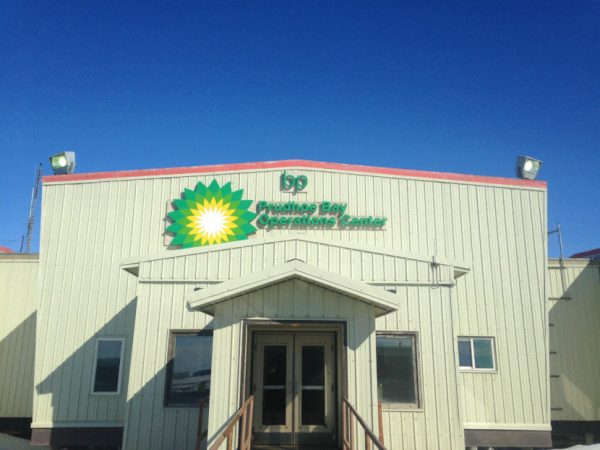
Oil industry insiders traded rumors about BP’s exit from Alaska long before it was officially announced on Tuesday.
But that’s not the only reason experts aren’t surprised about the company’s $5.6 billion deal with Hilcorp to sell off its interest in the Prudhoe Bay oil field, the trans-Alaska pipeline and the rest of its Alaska assets.
“When you’re BP and you’re a massive company and you’ve got assets all over the world, it’s hard for Alaska to compete with allocations in investments,” said Rowena Gunn, a research analyst for Alaska with Wood Mackenzie. “With BP being so large, often the majors aren’t quite so good with the mature, late-life fields because they’ve got such large overheads.”
At this point, Alaska represents just around 2 percent of the company’s global portfolio, Gunn said. In other words, while BP is big for Alaska, Alaska is no longer big for BP.
The company had largely stopped looking for new oil in Alaska, and in recent years, it sold its interests in other major North Slope assets to Hilcorp and ConocoPhillips. During that time, BP focused its efforts on stemming the decline of oil production at Prudhoe Bay.
In a statement accompanying the announcement, BP’s chief executive Bob Dudley said, “Alaska has been instrumental in BP’s growth and success for well over half a century.”
“However,” Dudley added, “we are steadily reshaping BP and today we have other opportunities, both in the U.S. and around the world, that are more closely aligned with our long-term strategy and more competitive for our investment.”
BP’s departure is part of a larger pattern in the oil industry, experts said.
“There is a natural order of progress in terms of operators in Alaska and elsewhere as the majors tend to do big, complicated megaprojects…and then they tend to transition to smaller operators, particularly private or private equity-backed operators as you enter late-life and efficiency is very important,” said Cody Rice, research director with Wood Mackenzie.
Hilcorp is known for buying older oil and gas fields and reviving production by streamlining operations. That’s exactly what the company has done in Cook Inlet since it arrived in the state in 2012 — it is now by far the biggest oil and gas operator there.
“We are in a transition in Alaska from maybe what we call the legacy companies into a situation where we have a couple of legacy companies — they would be Conoco and Exxon — with a handful of these newer types of companies that have come in to pick up where other companies are leaving,” said Andy Mack, Alaska’s natural resources commissioner under former governor Bill Walker. He added: “This is what we see today.”
Hilcorp founder and executive chairman Jeffery Hildebrand has “proven that he can develop and wring out of oil fields lots of production that previously was not available,” Mack said.
Industry insiders in Alaska said they long suspected the news was coming.
“People have known for a while there was going to be some kind of a change with regards to operation of the Prudhoe Bay unit,” said Rebecca Logan, chief executive of the Support Industry Alliance, an oil and mining trade group.
Since oil prices dropped in 2015, Logan said she has been paying attention to myriad oil company mergers and acquisitions on both a national and international level.
“I think people have to recognize this is the trend in the industry,” Logan said.
Logan said it’s likely jobs will be lost as BP transfers its assets to Hilcorp. But she added that the overall industry in Alaska got used to changes long ago.
“We are coming off a horrible three years for our industry. Our members laid off close to 6,000 people, and nobody ever thought we would gain all of those jobs back,” Logan said. “And so people are pretty fluid right now and pretty efficient — they had to be. And so I think they are prepared to continue working in that environment.”
Representatives from both BP and Hilcorp did not have firm answers Tuesday on the fate of the more than 1,600 employees who work for BP Alaska.
In an emailed statement, Hilcorp spokesperson Justin Furnace said Hilcorp’s plans for BP’s North Slope workforce “will develop as we determine how we will integrate the acquisition into Hilcorp’s existing operations and we receive a list of eligible employees from BP so we can begin the interview process.”
“We will be working to evaluate new opportunities at Prudhoe, but this process will take many months,” Furnace said.
Elizabeth Harball is a reporter with Alaska's Energy Desk, covering Alaska’s oil and gas industry and environmental policy. She is a contributor to the Energy Desk’s Midnight Oil podcast series. Before moving to Alaska in 2016, Harball worked at E&E News in Washington, D.C., where she covered federal and state climate change policy. Originally from Kalispell, Montana, Harball is a graduate of Columbia University Graduate School of Journalism.




